How long does an argument “last”? This matter is addressed by Chazal in a familiar teaching that compares and contrasts the disputes of some very different figures.
A Tale of Two Disputes
The Mishnah states (Avos 5:17):
כָּל מַחֲלוֹקֶת שֶׁהִיא לְשֵׁם שָׁמַיִם סוֹפָהּ לְהִתְקַיֵּם, וְשֶׁאֵינָהּ לְשֵׁם שָׁמַיִם אֵין סוֹפָהּ לְהִתְקַיֵּם. אֵיזוֹ הִיא מַחֲלוֹקֶת שֶׁהִיא לְשֵׁם שָׁמַיִם, זוֹ מַחֲלוֹקֶת הִלֵּל וְשַׁמַּאי. וְשֶׁאֵינָהּ לְשֵׁם שָׁמַיִם, זוֹ מַחֲלוֹקֶת קֹרַח וְכָל עֲדָתוֹ.
“Any dispute that is conducted for the sake of Heaven is destined to endure; but one that is not for the sake of Heaven is not destined to endure. What is an example of a dispute that is for the sake of Heaven? This is the dispute between Hillel and Shammai. (What is an example of a dispute) that is not for the sake of Heaven? This is the dispute of Korach and his entire company.”
On the surface of it, the Mishnah may appear straightforward enough. It compares the halachic debates that took place between the Tannaitic Sages Hillel and Shammai with Korach’s raucous rebellion against Moshe’s authority featured in this week’s parshah. And quite understandably, the first variety is deemed a virtuous event, while the second is rightfully condemned.
But that, as noted, is only on the surface and is somewhat of an oversimplified rendition. A closer look at the Mishnah seems to reveal some room for clarification. The Mishnah did not simply state that the machlokes Hillel v’Shammai is “good,” while Korach’s is “bad.” Rather, it spoke in terms of “enduring,” terming the Tannaitic dispute as one that is “sofah l’hiskayeim – in the end shall endure,” while by contrast, Korach’s is “ein sofah l’hiskayeim.” What exactly is the Mishnah’s intent by employing this characterization? And what, exactly, is it that is set to “endure” or not? Does it mean that the dispute will be ongoing? As we shall see, the commentators offer a number of enlightening interpretations to this Mishnah.
The Bartenura understands the description of “enduring” as pertaining to the protagonists themselves. The pristine intentions of Hillel and Shammai to discover the Torah’s truths are attested to by the fact that they themselves continued to live and thrive. This is in sharp contrast to the participants in Korach’s rebellion, who died an unusual death and “went lost from the midst of the congregation” (Bamidbar 16:33).
The Bartenura proceeds to offer an alternative approach, understanding the focus of the Mishnah to be on the purpose of the dispute. Shammai and Hillel engaged in a number of classical debates, in which they disagreed on the finer points of halachah. But as mentioned, they both were essentially striving for a shared goal: clarifying the truth of Torah and establishing a practical outcome. It is true that the guiding principle has been established that
the halachah follows the opinion of Hillel; but the goal of arriving at a definitive and practical
ruling has been met. Thus, the aim of the machlokes has indeed been miskayeim. But it is a much different matter when it comes to the dispute involving Korach. The aim in that case was the attainment of honor and power. And being burned alive, swallowed by the earth, and disappearing forever certainly did not constitute a successful achievement of the aforementioned goals.
Keeping it Going
Others maintain that the Mishnah indeed refers to the very “machlokes” itself. Rabbeinu Yitzchak points to the fact that although the halachah follows Hillel, Shammai’s dissenting opinion is recorded and appears throughout the Talmud. Thus, the machlokes indeed endures for posterity. The Medrash Shmuel explains the intent of the Mishnah that when done for the sake of Heaven, the arguing will endure and continue for years to come. The disputants will find many causes about which to argue, as indeed occurred with Hillel and Shammai who disagreed on a host of topics throughout the Talmud. But this itself is a blessed circumstance, for it translates into a long and productive life for the participants! And as evidenced by the case of Korach, when the arguing is not virtuous, one’s life may not end up lasting very long.
R’ Yisroel Belsky also explains this clause in the Mishnah as relating to the machlokes itself, but he approaches it from another angle. That is, he understands the intent as referring to the content and manner of the formulated arguments. One can tell if an argument is being conducted l’Sheim Shamayim if the position remains constant; that is, it is “miskayeim – endures.” But someone who is not motivated by the pristine intentions of merely seeking the truth will often end up shifting his claims. Thus, if simply stemming from poor character, one’s arguments will be subject to fluctuation – “ein sofah l’hiskayeim.”
It is interesting to note the effects that such poor middos (attributes) will have on the disputants themselves. This idea is borne out by the Malbim, who makes a pointed observation about the formulation of our Mishnah. When referring to the machlokes l’Sheim Shamayim, the Mishnah mentions both sides of the dispute: Hillel and Shammai. But in the latter half, the Mishnah makes no reference to the machlokes of “Korach and Moshe”; rather, it refers only to the machlokes of “Korach v’chol adaso – Korach and his entire company”. Why the shift? The Malbim (beginning of Parshas Korach) explains that this also highlights the stark difference between those who argue l’Sheim Shamayim and those who do not. For the latter case will be marked by a severe case of infighting: even those participants who are allegedly on the same side will end up fighting amongst themselves. It is for this reason that the Mishnah referred to the machlokes of “Korach v’chol adaso.” For after a short duration, this is indeed what occurred; it degenerated into an internal machlokes between Korach and the rest of his company!







